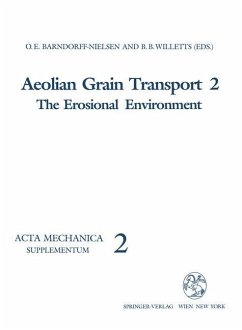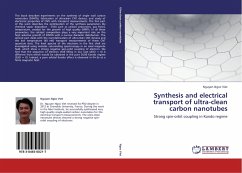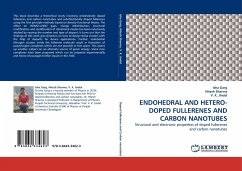
DYNAMICS AND FRICTION IN DOUBLE WALLED CARBON NANOTUBES
Versandkostenfrei!
Versandfertig in 6-10 Tagen
45,99 €
inkl. MwSt.

PAYBACK Punkte
23 °P sammeln!
Nanotubes have exceptional physical properties, theyare as tough as diamond and excellent heat andelectricity conductors. On the other hand theircylindrical shape suggests the possibility of usingthem as mechanical parts at the nanoscale. Recent experiments showed that oscillators or rotationalaxes could be manufactured and controlled. Moreoverthe motion was observed to be wearless and withextremely low friction. This book shows analyticaland numerical results on the dynamics and friction inthose systems. The results show that the empiricallaw stating that friction is proportional to the areao...
Nanotubes have exceptional physical properties, they
are as tough as diamond and excellent heat and
electricity conductors. On the other hand their
cylindrical shape suggests the possibility of using
them as mechanical parts at the nanoscale. Recent
experiments showed that oscillators or rotational
axes could be manufactured and controlled. Moreover
the motion was observed to be wearless and with
extremely low friction. This book shows analytical
and numerical results on the dynamics and friction in
those systems. The results show that the empirical
law stating that friction is proportional to the area
of contact is very well verified. Moreover, friction
increases with temperature. These dependencies can be
easily interpreted. Indeed, if the temperature is
large enough so that electronic effects can be
negligible, then dissipation is only due to the
phonons. Consequently, if the temperature increases,
the coupling between the phonons and the
rotational or oscillatory motions increases, as well
as friction. In the same manner, when the area of
contact increases, the number of available phonons to
transport energy increases, resulting in a higher
friction force.
are as tough as diamond and excellent heat and
electricity conductors. On the other hand their
cylindrical shape suggests the possibility of using
them as mechanical parts at the nanoscale. Recent
experiments showed that oscillators or rotational
axes could be manufactured and controlled. Moreover
the motion was observed to be wearless and with
extremely low friction. This book shows analytical
and numerical results on the dynamics and friction in
those systems. The results show that the empirical
law stating that friction is proportional to the area
of contact is very well verified. Moreover, friction
increases with temperature. These dependencies can be
easily interpreted. Indeed, if the temperature is
large enough so that electronic effects can be
negligible, then dissipation is only due to the
phonons. Consequently, if the temperature increases,
the coupling between the phonons and the
rotational or oscillatory motions increases, as well
as friction. In the same manner, when the area of
contact increases, the number of available phonons to
transport energy increases, resulting in a higher
friction force.












